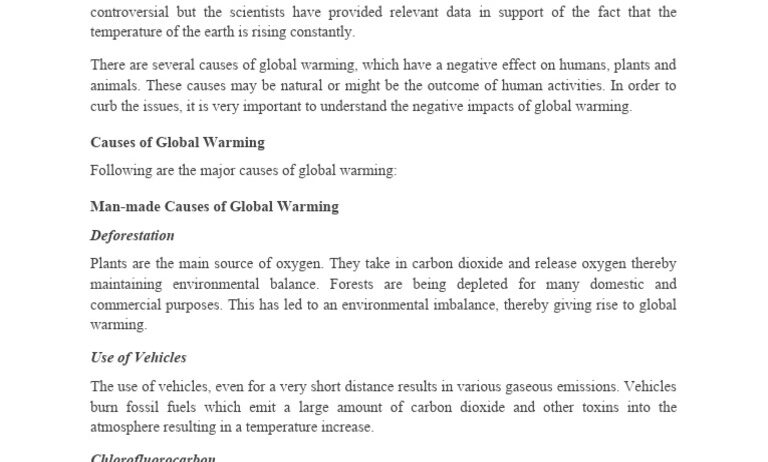Global warming, a term frequently echoed in conversations about climate change, signifies a profound alteration in Earth’s climate system, driven primarily by the accumulation of greenhouse gases in the atmosphere. To grasp the implications of global warming, it’s essential to delve into its definition, causes, and the overarching effects on our planet.
The essence of global warming resides in the gradual and sustained increase in Earth’s average surface temperature. This phenomenon is predominantly attributed to anthropogenic activities, notably the burning of fossil fuels such as coal, oil, and natural gas, which release carbon dioxide (CO2) and other greenhouse gases into the atmosphere. These gases form a thermal blanket around the Earth, trapping heat and resulting in a greenhouse effect. While this effect is natural and necessary for life on our planet—regulating temperatures and enabling ecosystems to thrive—the excessive concentration of these gases has formed an artificial barrier, exacerbating the warming trend.
The ramifications of global warming are vast, intersecting with myriad environmental, social, and economic concerns. As the climate warms, we observe significant alterations in weather patterns, the melting of ice caps and glaciers, rising sea levels, and increased frequency and intensity of extreme weather events. Understanding these dynamics forms the crux of recognizing the global climate crisis.
The anthropogenic contributions to greenhouse gas emissions originate from various sectors, including transportation, industry, and agriculture, which collectively account for a substantial percentage of these emissions. Among them, deforestation serves as a critical multiplier, as trees play a pivotal role in sequestering carbon dioxide. The eradication of forests not only inhibits this natural process but also releases stored carbon back into the atmosphere, further intensifying global warming.
As average global temperatures rise, so do the consequences for wildlife and natural habitats. Ecosystems are becoming increasingly stressed, leading to habitat loss and endangering countless species. The delicate balance of biodiversity is in peril as shifting climates alter habitats faster than many organisms can adapt. Coral reefs, which are highly sensitive to temperature fluctuations, are experiencing mass bleaching events, resulting in die-offs that disrupt marine biodiversity.
Weather events fueled by climate change have also garnered considerable attention. The frequency and intensity of hurricanes, droughts, and wildfires are on the rise. For instance, warmer ocean temperatures can lead to more severe hurricanes, while prolonged droughts can devastate agricultural regions. The implications for food security are significant, as both crop yields and livestock production fluctuate unpredictably in response to climatic changes.
Moreover, the socio-economic dimensions of global warming are equally critical. Vulnerable populations, particularly in developing nations, often bear the brunt of climate change impacts due to limited resources and adaptive capacity. Increased flooding, drought, and food scarcity can exacerbate existing inequalities, prompting mass migrations and conflict over dwindling resources. Addressing these disparities is essential for a sustainable response to the climate crisis.
One of the most effective strategies to combat global warming lies in transition to renewable energy sources. Solar, wind, and hydroelectric power present viable alternatives to fossil fuels, drastically reducing greenhouse gas emissions. A concerted global effort toward green technologies is paramount, not only for environmental mitigation but also for fostering economic resilience and job creation in emerging sectors.
In addition to energy transitions, the implementation of energy efficiency measures can further curtail emissions. From upgrading infrastructure to investing in electric transportation, innovative practices can significantly mitigate our carbon footprint. In parallel, reforestation and afforestation initiatives stand as powerful countermeasures in sequestering carbon and restoring ecological balance.
Understanding global warming also involves examining global agreements, such as the Paris Agreement, which established international frameworks for reducing greenhouse gas emissions and limiting global temperature rise. These accords embody the collective commitment of nations to confront the climate crisis collaboratively, illustrating that global warming is not merely a localized issue, but a threat that transcends borders.
Educating communities about the repercussions of global warming is vital in fostering public engagement and promoting sustainable practices. Community-based initiatives, environmental education programs, and awareness campaigns can galvanize individuals to embrace sustainable habits, equipped with knowledge and resources to advocate for change.
The road ahead requires a multifaceted approach, integrating technological innovation, policy reform, and grassroots mobilization. As awareness surrounding global warming intensifies, so too does the impetus for action. Each individual holds a role in steering society towards resilience against the backdrop of a changing climate.
In conclusion, global warming epitomizes a crucial pivot point in Earth’s narrative, weaving together environmental, social, and economic threads. Understanding its complexities invites action, fostering a collective responsibility to ensure a sustainable future for generations to come. The dialogue concerning global warming is not limited to scientists but encompasses all stakeholders committed to preserving our planet’s health. By recognizing the inherent interconnectedness of our actions and their implications, society can mobilize toward solutions that not only address the crisis but pave the way for a thriving ecological legacy.







